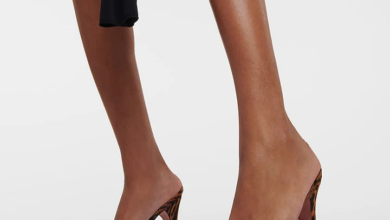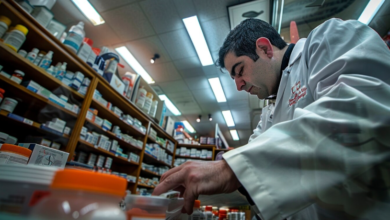How to Build a Reliable High Chair Supply Chain?

In the baby furniture industry, the reliability of the high chair supply chain—a core product carrying safety risks and high-frequency use—is the lifeline for brand owners and retailers.
The high chair sector faces a dual risk: high safety risks (structural instability, loose components leading to recalls and lawsuits) and long lead time risks (complex international ocean freight and customs clearance procedures, leading to unpredictable delivery). In such an environment, sourcing based merely on the lowest cost is obsolete. Strategic procurement now demands the construction of a global supply chain system characterized by high efficiency, high safety, and high flexibility.
Manufacturers are no longer simple product providers but strategic allies who help brands mitigate market risks and achieve rapid growth. This article will break down the three strategic pillars for building a reliable high chair supply chain, offering brand owners the “golden rules” for constructing their global sourcing system.
Pillar One: Manufacturer Deep Integration
The first step in building a reliable supply chain is upgrading the relationship with the manufacturer, transitioning from simple buying and selling to deep strategic collaboration.
R&D Co-Creation Drives Product Iteration
The manufacturer must possess strong ODM (Original Design Manufacturing) capabilities, capable of swiftly translating a brand owner’s market insights (e.g., consumer demand for easy cleaning and folding) into products that meet both design and safety standards.
- The manufacturer should proactively engage in early product conceptual discussions, offering engineering feasibility advice and material optimization solutions.
- Through co-creation, core DNA that meets target market compliance and functional requirements is embedded in the product during the design phase, enabling rapid iteration.
Complete Transparency of the Value Chain
In the baby product space, trust stems from transparency. A reliable manufacturer must be able to offer a fully transparent traceability system “from raw materials to final delivery.”
- Require the manufacturer to provide compliance documentation for all key raw materials, such as FSE/FSC certification for wood, food-grade proof for plastic granules, and non-toxicity certificates (lead-free, phthalate-free) for coatings.
- This transparency helps brand owners swiftly provide comprehensive source information when facing consumer inquiries or regulatory audits, mitigating brand risk.
Long-Term Trust and Stable Product Supply
The partnership should be built on long-term trust, selecting partners with full-process quality control capabilities. Only with a stable and reliable supply system of wholesale high chair products can brand owners confidently execute market promotions and channel expansion.
Closed-Loop Management of Customer Feedback
The manufacturer must prioritize and rapidly respond to market feedback. An excellent strategic ally views after-sales issues as opportunities for product improvement.
- Establish a fast feedback mechanism to quickly transmit B2C customer complaints and suggestions to the R&D and engineering departments.
- Continuously optimize product design and material selection based on real-world usage data, such as adjusting harness length or refining the tray locking mechanism. This embodies the philosophy of ongoing support for the client.
Pillar Two: Quality Compliance Management
In the high chair supply chain, quality compliance is not the responsibility of a single department but a systemic process that permeates the entire manufacturing flow. Brand owners must demand that manufacturers manage risk using the highest standards right at the source of procurement.
The “Highest Standard” Principle for International Compliance
When a product is planned for sale in multiple international markets, the procurement benchmark should be set at the most stringent standard.
- For example, the product should simultaneously meet the requirements of the US ASTM F404, the EU EN 14988, and potentially higher regional regulations.
- Furthermore, material safety standards should align with advanced certifications like GREENGUARD GOLD, ensuring the product also meets the highest requirements for indoor air quality.
Rigor of the Quality Control System (QC)
The greatest fear in mass production is quality fluctuation. A reliable manufacturer must have rigorous quality control processes to ensure product consistency.
- Three Inspection Checkpoints: Implement strict IQC (Incoming Quality Control), IPQC (In-Process Quality Control), and OQC (Outgoing Quality Control). Specifically, critical safety components of the high chair (such as the five-point harness and connecting hardware) must undergo 100% inspection or thorough sampling.
- Third-Party Testing: All necessary third-party laboratory tests (e.g., load-bearing tests, stability tests, material toxicity tests) must be completed and clearly reported before bulk production commences.
Safety DNA in Product Design
Safety must be internalized within the product’s structural design, rather than relying on external accessories for remediation.
- Safety features such as anti-tip design, restraint systems, non-sharp edges, and anti-pinch designs must be integrated from the design stage.
- Structural engineers must treat safety performance as the number one priority, ensuring the high chair maintains absolute stability even during a baby’s activity and pushing.
Pillar Three: Supply Chain Flexibility and Efficiency
In global market competition, speed and adaptability are paramount. An efficient and flexible supply chain helps brand owners quickly respond to market changes and unpredictable external risks.
Efficiency Driven: The Commitment to On-Time Delivery (OTD)
Manufacturers must possess efficient production management and reliable logistics coordination capabilities to ensure On-Time Delivery (OTD).
- Lean Manufacturing: Shorten production cycles through lean manufacturing practices and advanced production equipment.
- Logistics Coordination: A professional export team should manage all international logistics coordination, including ocean freight booking and customs documentation, ensuring products arrive at the destination safely and on schedule.
Flexible Manufacturing Responds to Market Demand
Market demand changes rapidly, making supply chain “flexibility” more valuable than “rigidity.”
- MOQ Strategy: Offer flexible Minimum Order Quantity (MOQ) policies to support brand owners in market testing, small-batch multi-shipment procurement, and new product incubation.
- Rapid Capacity Switching: Manufacturers should be able to quickly adjust capacity based on market trends, such as swiftly switching production from standard high chairs to popular foldable high chair models on short notice.
Packaging and Logistics Optimization
Supply chain efficiency is also reflected in the optimization of the end-user experience.
- Easy Assembly Design: Packaging design must be based on the product’s easy assembly characteristics, providing clear pictorial instructions and modular packaging to lower the installation barrier for end-users. This aligns with the strong demand from end-users for easy assembly and intuitive functional operation.
- Logistics Security: Optimize internal packaging and cushioning materials to ensure the product remains undamaged during long-distance international transit, reducing B2B clients’ costs associated with exchanges and after-sales service.
Conclusion
Building a reliable high chair supply chain is a comprehensive strategic undertaking, resulting from the balance of safety, efficiency, and flexibility.
For brand owners and retailers, viewing supply chain management as a core competence and establishing long-term, mutually beneficial partnerships with strategic manufacturers is the “moat” of success. A manufacturer equipped with R&D co-creation capability, a full-process quality control system, and highly flexible manufacturing can consistently provide your brand with high-quality high chair products, jointly mitigating market risks and achieving sustained, healthy business growth.



